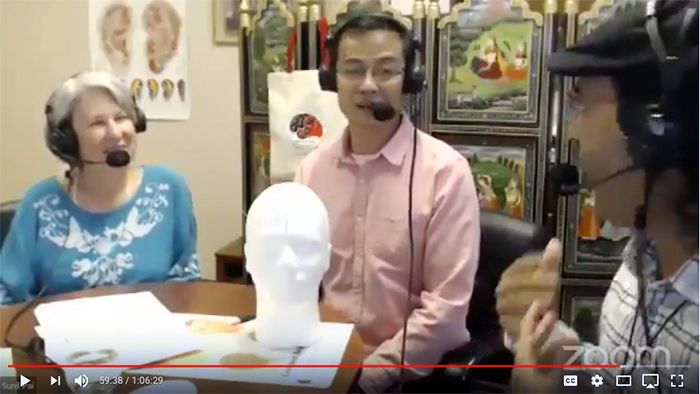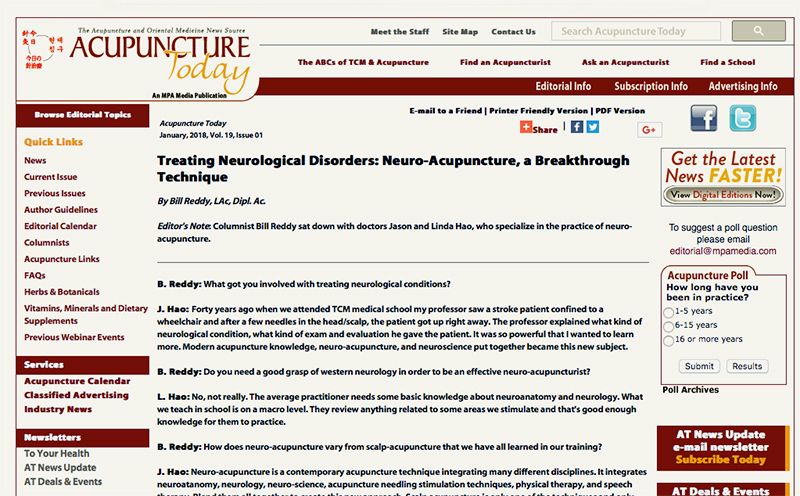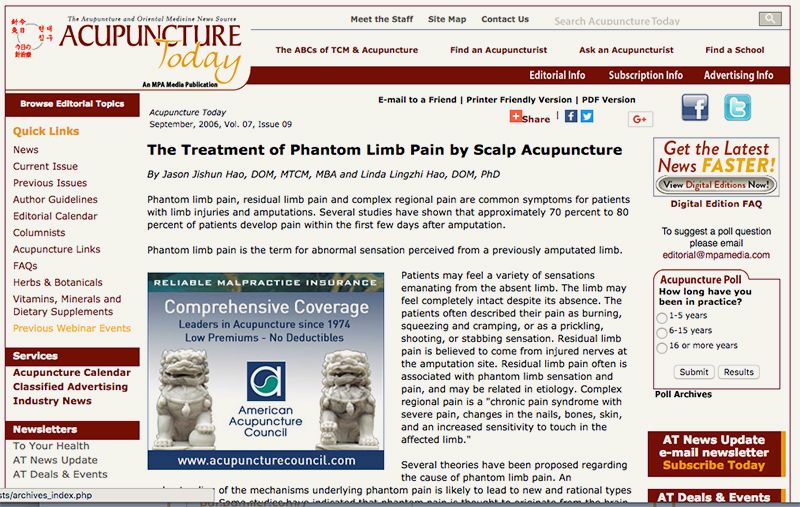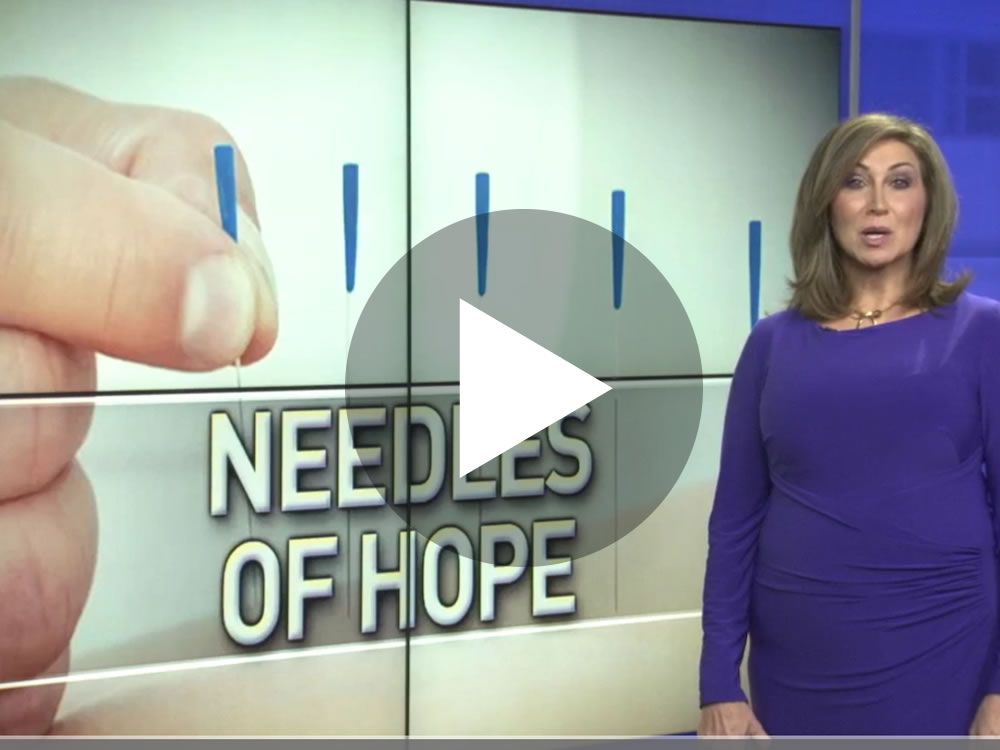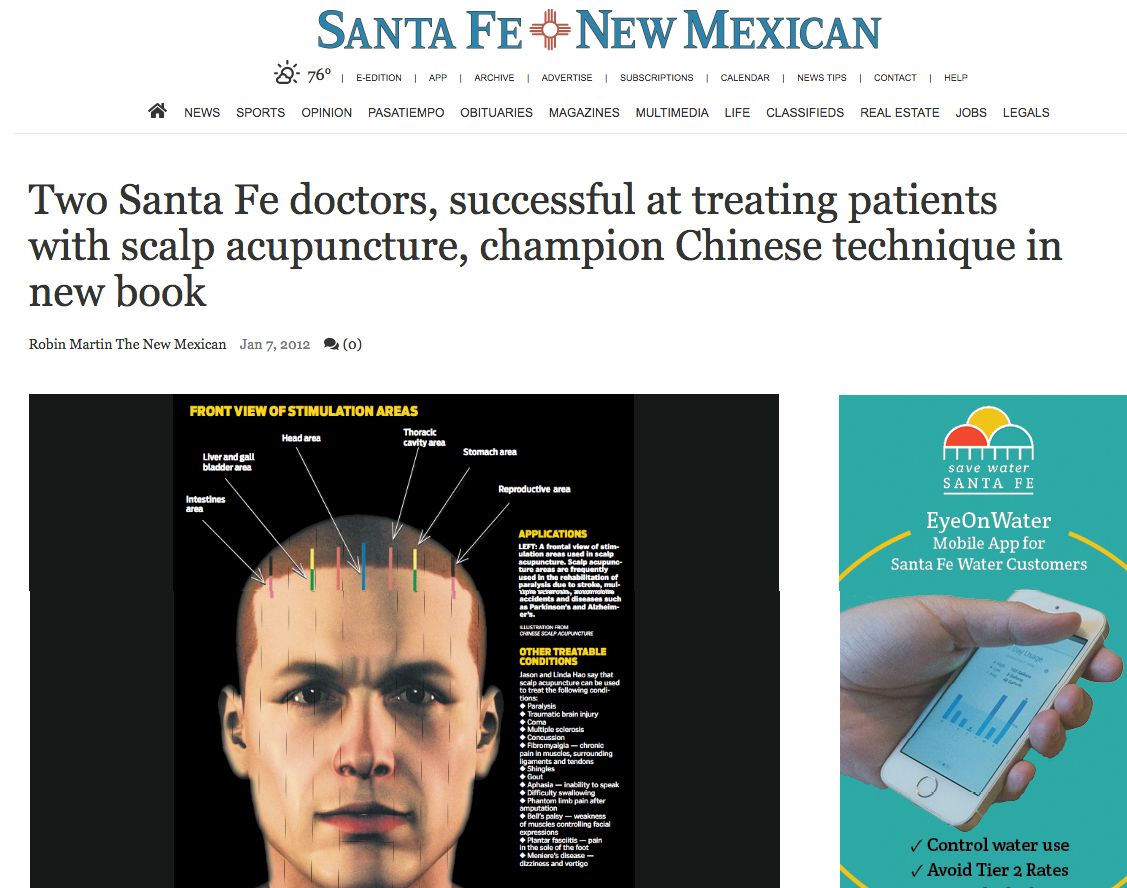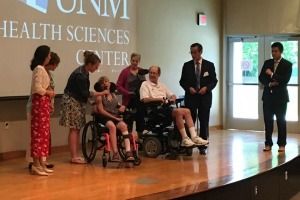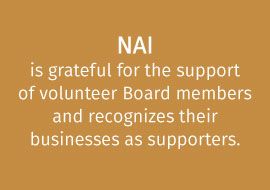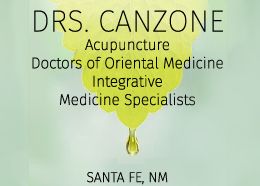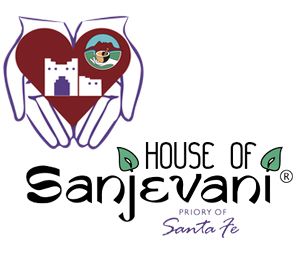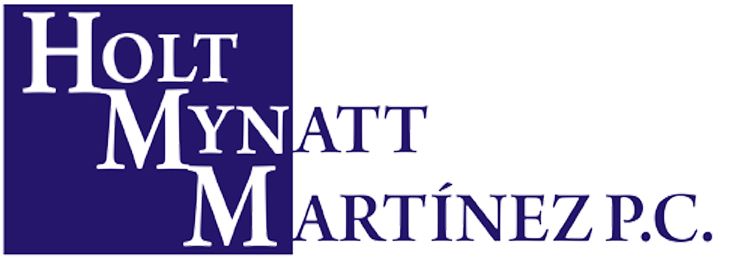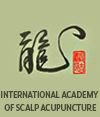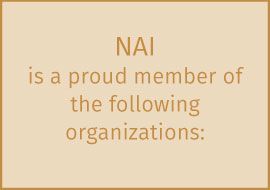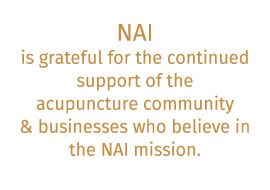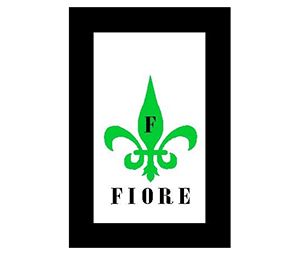Media Coverage
The symposium started at 8:30 A.M. The opening ceremony was hosted by Dr. Chao An, Director of US Center for Chinese Medicine.Dr. Koubeissi and Dr.Baixiao Zhao, co-chairs of the symposium from China and US, made the opening remarks, and announced the founding of West-East Neurology Associates. The Maryland House Delegate Clarence Lam, expert of preventive medicine at Johns Hopkins University, attended the symposium and presented a congratulatory letter to the founding of West-East Neurology Associates. Twenty experts, including Neurological specialists, Traditional Chinese Medicine experts and acupuncturist have been engaged as honorable professors, and will contributes to the Western-TCM integrated treatment of neurological disorder patients at US Center for Chinese Medicine in the future.
Sanjevani Integrative Medicine
Maureen Sutton, LMT and Sunil Pai, MD sit down and chat with the world famous Dr. Jason Hao, and good friend Ula Tinsley to discuss Neuro-Acupuncture. Dr. Hao is the founder of the Neuro-Acupuncture Institute. He has done some incredible things for patients who thought they would be forever disabled. Special Guest Ula Tinsley, mother of an autistic child, will share her son’s amazing story of response, and their miraculous results with only a few Neuro-Acupuncture treatments.
B. Reddy: What got you involved with treating neurological conditions?
J. Hao: Forty years ago when we attended TCM medical school my professor saw a stroke patient confined to a wheelchair and after a few needles in the head/scalp, the patient got up right away. The professor explained what kind of neurological condition, what kind of exam and evaluation he gave the patient. It was so powerful that I wanted to learn more. Modern acupuncture knowledge, neuro-acupuncture, and neuroscience put together became this new subject.
B. Reddy: Do you need a good grasp of western neurology in order to be an effective neuro-acupuncturist?
L. Hao: No, not really. The average practitioner needs some basic knowledge about neuroanatomy and neurology. What we teach in school is on a macro level. They review anything related to some areas we stimulate and that's good enough knowledge for them to practice.
Phantom limb pain, residual limb pain and complex regional pain are common symptoms for patients with limb injuries and amputations. Several studies have shown that approximately 70 percent to 80 percent of patients develop pain within the first few days after amputation.
Phantom limb pain is the term for abnormal sensation perceived from a previously amputated limb.
Patients may feel a variety of sensations emanating from the absent limb. The limb may feel completely intact despite its absence. The patients often described their pain as burning, squeezing and cramping, or as a prickling, shooting, or stabbing sensation. Residual limb pain is believed to come from injured nerves at the amputation site. Residual limb pain often is associated with phantom limb sensation and pain, and may be related in etiology. Complex regional pain is a "chronic pain syndrome with severe pain, changes in the nails, bones, skin, and an increased sensitivity to touch in the affected limb."
It was a full house at the Jean Cocteau Cinema on the Friday before Thanksgiving when invited patients and their families, acupuncture students and friends of the Haos met to view a 15-minute film, Modern Day Miracles — The curious art of neuro-acupuncture.
The film was made by Mark Medoff, a professor at New Mexico State University who won a Tony award for his Broadway play, Children of a Lesser God. In 1986, the play was made into a successful movie, and Medoff’s screenplay was nominated for an Academy Award.
Medoff’s short piece on the Haos’ neuro-acupuncture practice highlights 10 of their patients, most of whom were present at the showing. It explains how the doctors treat various neurological disorders by placing needles in their patients’ scalps.
March, 2009
JASON HAO, DOM: PIONEERING THE USE OF
SCALP ACUPUNCTURE TO TRANSFORM HEALING
Interview by Frank Lampe and Suzanne Snyder • Photography by Consuelo Pineda Photography
Alternative Therapies in Health and Medicine (ATHM): Can you tell us a little bit about your background, including how you became interested in medicine and specifi cally acupuncture?
Dr Hao: I am from Harbin, in northeast China. I got a bachelor’s degree in 1982 and a master’s degree in 1987 from one of the best Chinese medicine universities, Heilongjiang University of Chinese Medicine. About 45 universities teach Chinese medicine in China, and only 6 of them are called universities; the others are called colleges. The university I attended was famous in China and the leader in teaching and research, especially for what I specialized in—scalp acupuncture. I received an excellent education and training there. I learned from a very famous professor in the scalp acupuncture field, Shun Shentian. Another professor I learned a great deal from is Yu Zhishun. Dr Shun Shentian is still active and very busy. He is around 71 years old, and he still treats 60 or 70 patients a day.
We always complain we work too hard in this country. But when you hear about a 70-year-old treating 60 or 70 people a
day, you realize we should not complain.
Robin Martin A woman in a wheelchair, victim of a car accident, was brought to a Santa Fe acupuncture clinic paralyzed in her legs, feet and hands.
Doctors Jason Jishun and Linda Lingzhi Hao specialize in scalp acupuncture that they use to treat patients who have not responded well to traditional acupuncture or Western medicine. This story is related to Chinese Scalp Acupuncture, a book they published this year.
The couple found that the patient was paralyzed in all four extremities and was suffering from widespread muscle spasms. After the first treatment, she could wiggle her toes and her muscle spasms decreased. After more scalp acupuncture treatments, she had regained all movement in her hands and arms, and could walk with a cane.


